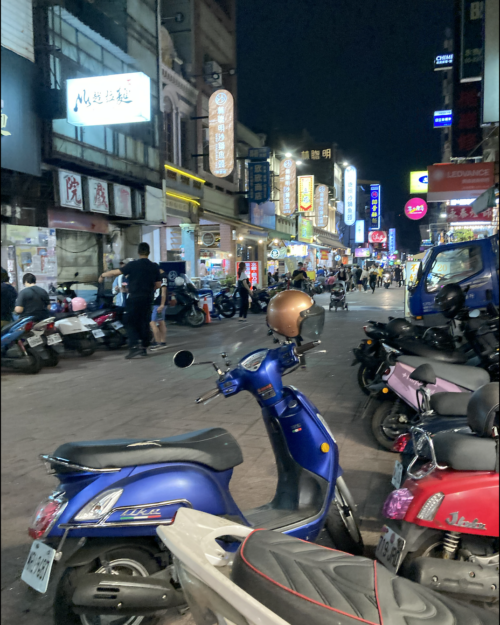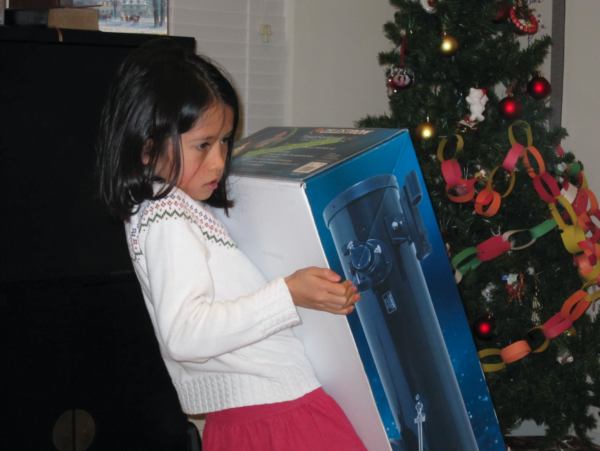July 18, 2023

By: AEOP Membership Council Member Zoe Tavares
What were some of your childhood fears? Some common responses include fear of spiders, heights or thunderstorms. Fear of the dark was at the top of the list. My overactive imagination and nighttime darkness in my suburban neighborhood fostered this fear as a child.
However, years later, I desperately wished for darkness as I tossed and turned in bed. I had traveled to visit family in Taiwan over Spring Break, and the city lights of our dense neighborhood pierced through my closed window blinds. To make things worse, birds kept chirping outside throughout the night. I woke up the next morning groggy, exhausted and mildly confused. This was my first experience with light pollution, but it certainly wouldn’t be my last.
I had last visited Taiwan in middle school, so I had few memories from before my Spring Break trip. It was a shocking contrast from my quiet suburban neighborhood, lit by streetlights and occasional porchlight, to urban Taiwan’s bright, bustling streets. When I visited a local night market with my mom (pictured), I was initially stunned by the flashing store signs, glaring motorcycle headlights and beaming streetlights. We reached a busy intersection, and I, overwhelmed by the sights and sounds, looked up into the night sky for a source of calm. Stargazing has been one of my favorite hobbies since I received a telescope from my parents in elementary school (pictured). I love knowing I was looking at the same stars as other people, miles away from me. But in Taiwan, I looked up and couldn’t see a single star. The sky looked almost gray, as the city spilled light into the atmosphere.
This was a shock to me— how could people rarely see the stars in their own neighborhoods?—but as I researched, I found that about one-third of all people can’t see the Milky Way due to light pollution at night (Ramlagan). Light pollution is the excessive use of artificial light (Nathanson), and is most prevalent in dense, urbanized areas. Inefficient and badly-designed lighting systems waste light, and therefore electricity, and when they don’t target the right areas they allow excess light to spill into the sky. Light pollution has worsened in recent years as cities become more densely populated.
 Light pollution can disrupt human sleep and circadian rhythms, as I experienced in Taiwan. Moreover, it negatively affects wildlife and the environment. For example, turtle hatchlings emerge at night and locate the bright horizon over the ocean to find their way. However, according to the International Dark-Sky Association, light pollution disorients hatchlings and causes millions to die yearly. Light pollution also disrupts the migratory patterns of birds that rely on the stars and moon for navigation, and are confused by artificial lights. The nighttime bird chirping I heard could also be explained by light pollution, as birds can mistake artificial light as an indicator of daytime hours.
Light pollution can disrupt human sleep and circadian rhythms, as I experienced in Taiwan. Moreover, it negatively affects wildlife and the environment. For example, turtle hatchlings emerge at night and locate the bright horizon over the ocean to find their way. However, according to the International Dark-Sky Association, light pollution disorients hatchlings and causes millions to die yearly. Light pollution also disrupts the migratory patterns of birds that rely on the stars and moon for navigation, and are confused by artificial lights. The nighttime bird chirping I heard could also be explained by light pollution, as birds can mistake artificial light as an indicator of daytime hours.
Fortunately, there are several realistic strategies for decreasing light pollution. Firstly, a better lighting system design can decrease the amount of light going upwards and keep light focused on the ground. Innovations in lighting and energy are also working to reduce the wattage needed for artificial light. Local and national legislators can create legislation to enforce light regulations and subsidize the development of better lighting technologies. In addition, international organizations, like the UN, should incorporate the reduction of light pollution into existing pollution elimination plans. While these groups have great authority in addressing light pollution, we all have a share in responsibility too. Individuals and communities can spread awareness by educating the youth, joining grassroots organizations and practicing mindful light usage to the best of their ability. Alleviating the light pollution crisis is one of the most crucial steps towards creating a sustainable, healthy future for the Earth.
Works Cited
“Light Pollution Effects on Wildlife and Ecosystems.” International Dark-Sky Association, 12 Sept. 2016, www.darksky.org/light-pollution/wildlife/.
Nathanson, Jerry. “Light Pollution.” Encyclopædia Britannica, Encyclopædia Britannica, Inc., 31 Mar. 2023, www.britannica.com/science/light-pollution.
Ramlagan, Nadia. “One Third of People Cannot See the Milky Way.” American Association for the Advancement of Science (AAAS), 9 June 2016, www.aaas.org/news/one-third-people-cannot-see-milky-way.
Find a Volunteering Opportunity
Visit our Program Volunteers page for a tool to find the best opportunity for you.
eCYBERMISSION Grants
The eCYBERMISSION Mini-Grant is intended to support teachers/program leaders as they implement eCYBERMISSION with their teams. Educators (formal and informal) of students in grades 6-9 are encouraged to apply. Special consideration is given to Title 1 schools and to those with underserved/ under-represented populations.
